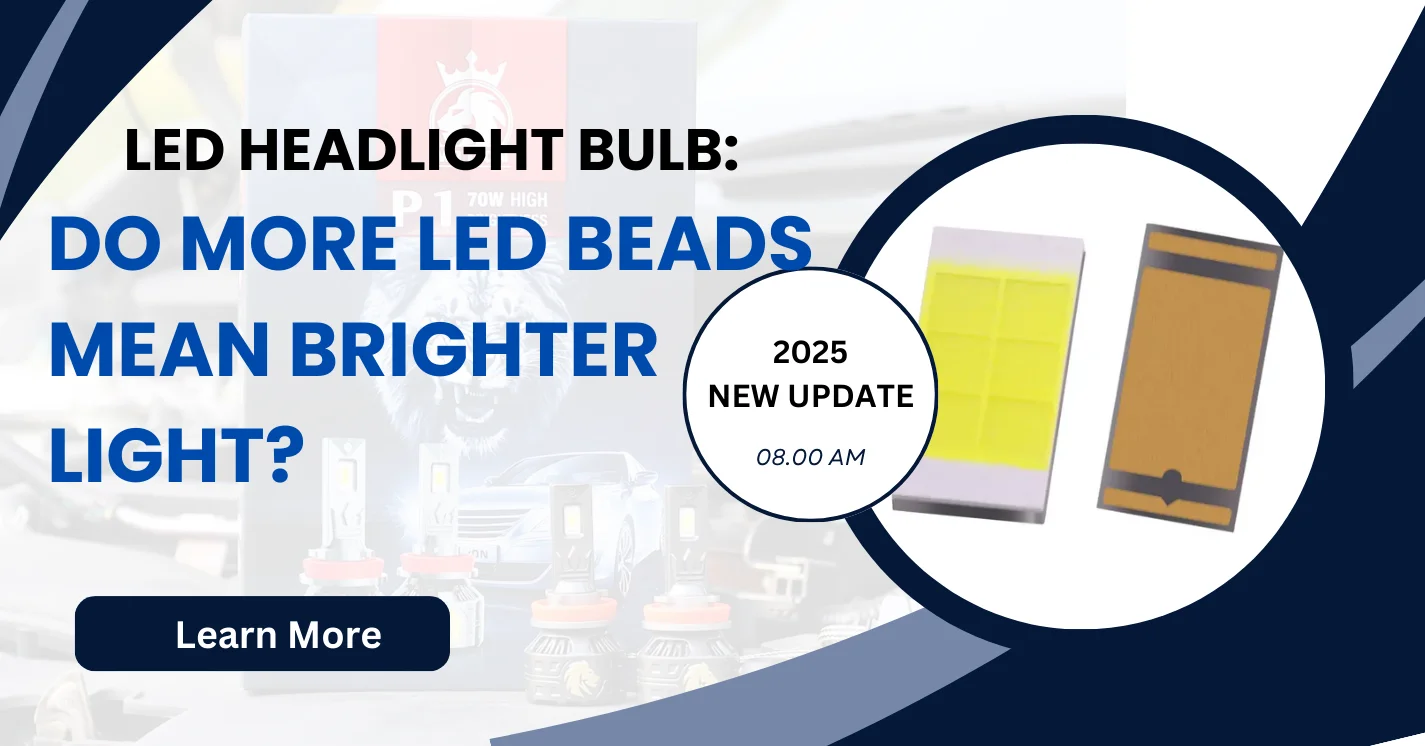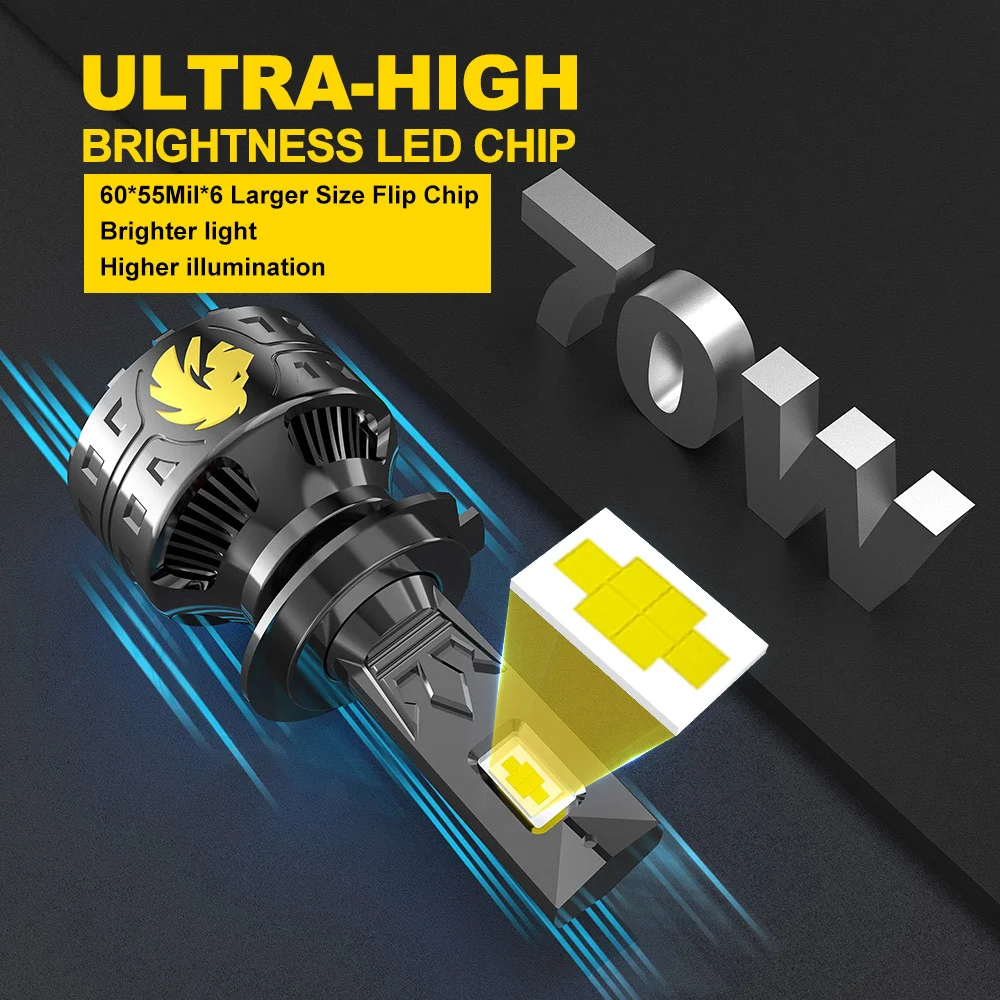As the most expensive and essential component of an LED headlight bulb, LED lamp beads play a crucial role in determining the bulb’s light output and brightness.
When selecting an LED headlight bulb, you may notice significant variation in the number of LED beads each bulb contains. Some LED bulbs feature 6 beads, while others include 8 or even 12 beads, reflecting diverse designs aimed at optimizing performance.
In this case, customers may have one common question: Do more LED beads mean brighter light? At first glance, it seems logical that more chips would automatically equal to higher brightness. After all, more components could mean more light output, right? However, the answer is not as straightforward as it seems. The brightness of an LED bulb depends on multiple factors, such as the quality of the chips, their arrangement, and the bulb’s overall design. Simply increasing the number of chips doesn’t guarantee a brighter or more efficient light.
In this blog, we’ll explore how LED chips impact brightness, the role of other design elements, and what to consider when selecting the perfect LED headlight bulb for your car. Get ready to see the light—clearly!
Do LED Headlight With More Beads Creat Brighter Light?
The answer is: “No.” The brightness of LED headlight bulbs has a certain relationship with the number of lamp beads; However, a higher number of beads does not necessarily mean better performance, it may cause potential excessive heat, scattering light beam pattern etc. This require specific analysis of the specific situation.
In General
Supposed that there are two types of LED headlight bulbs with the same power and light-emitting area. Generally speaking, it’s wise to choose that LED headlight bulb with more lamp beads. This is because the power of LED headlight bulb can be distributed to more lamp beads, thus reducing the power stress of a single lamp bead. This helps improve heat dissipation efficiency.
Things To Consider
Quality & Performance of Lamp Beads
Image | 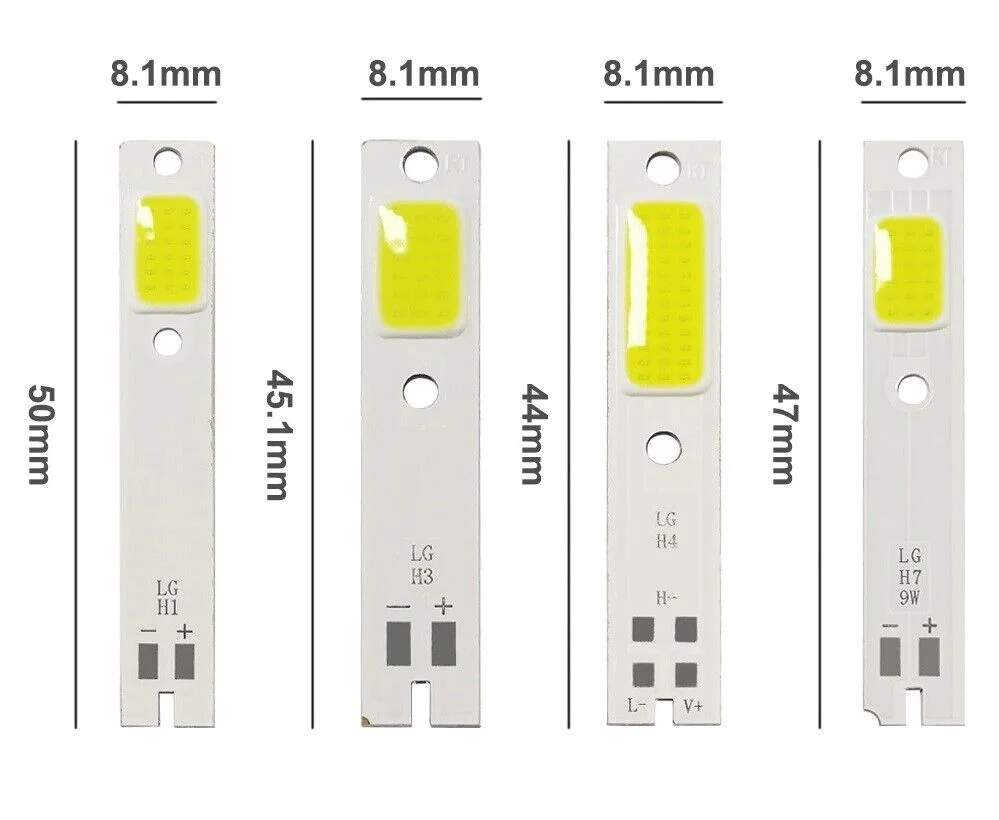 | 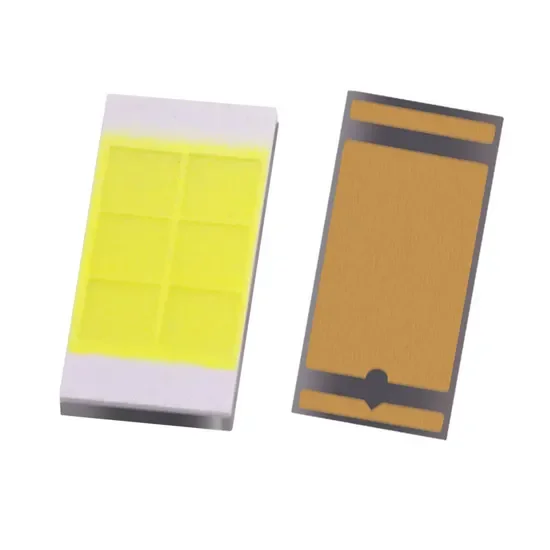 | 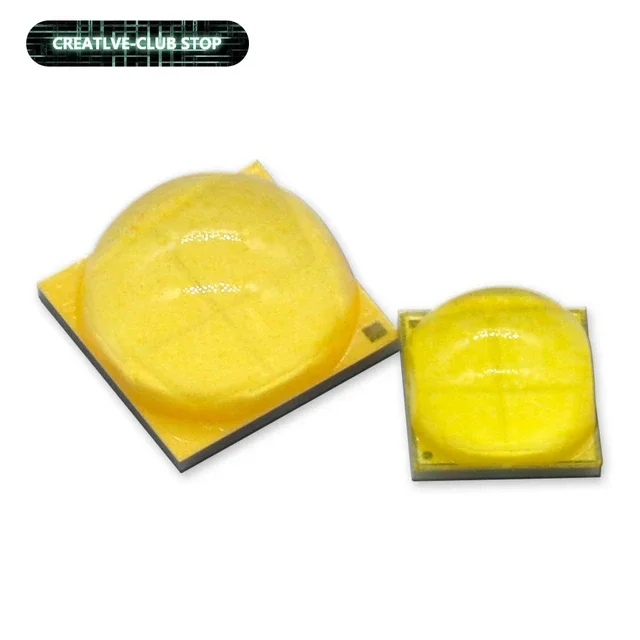 | 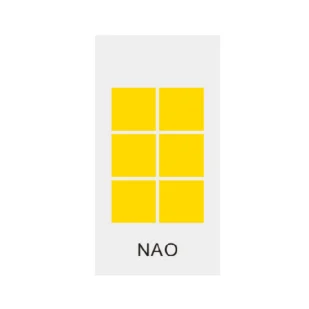 |
Rating | 1/5 | 1.5/5 | 3/5 | 5/5 |
Chip Type | COB (Chip-On-Board) | CSP (Chip Scale Package) | Cree | Flip Chip |
Pros | Cheap price | Cheap price, small size, high light efficiency | Focus beam pattern which is good for high beam | Focus light beam, clear cutoff, good heat dissipation |
Cons | When used in high-power LED headlights, it is easy to produce glare light, and may also cause serious heat dissipation problems. | It is easy to cause heat dissipation problems when used in high-power LED headlight bulb | Poor heat dissipation, low brightness, narrow beam, not good for low beam | Difficult manufacturing process |
The number of lamp beads is not the only criterion for measuring the performance of LED headlights. It is equally important to consider the quality of the lamp beads, including their bead type, size, and power.
To cut costs, some manufacturers use low-quality beads in LED headlight bulbs, such as large-size COB chips. These are outdated chips for car headlights, known for their poor light shape, low power, and limited brightness.
Therefore, if inferior lamp beads are used, an LED headlight bulb with a high number of beads still cannot match the performance and brightness of a single high-quality lamp bead.
Also Read: 5 Common Chips For LED Headlight Bulb, Which is The Best
A Good Example:
NAOEVO NG LED Headlight Bulb
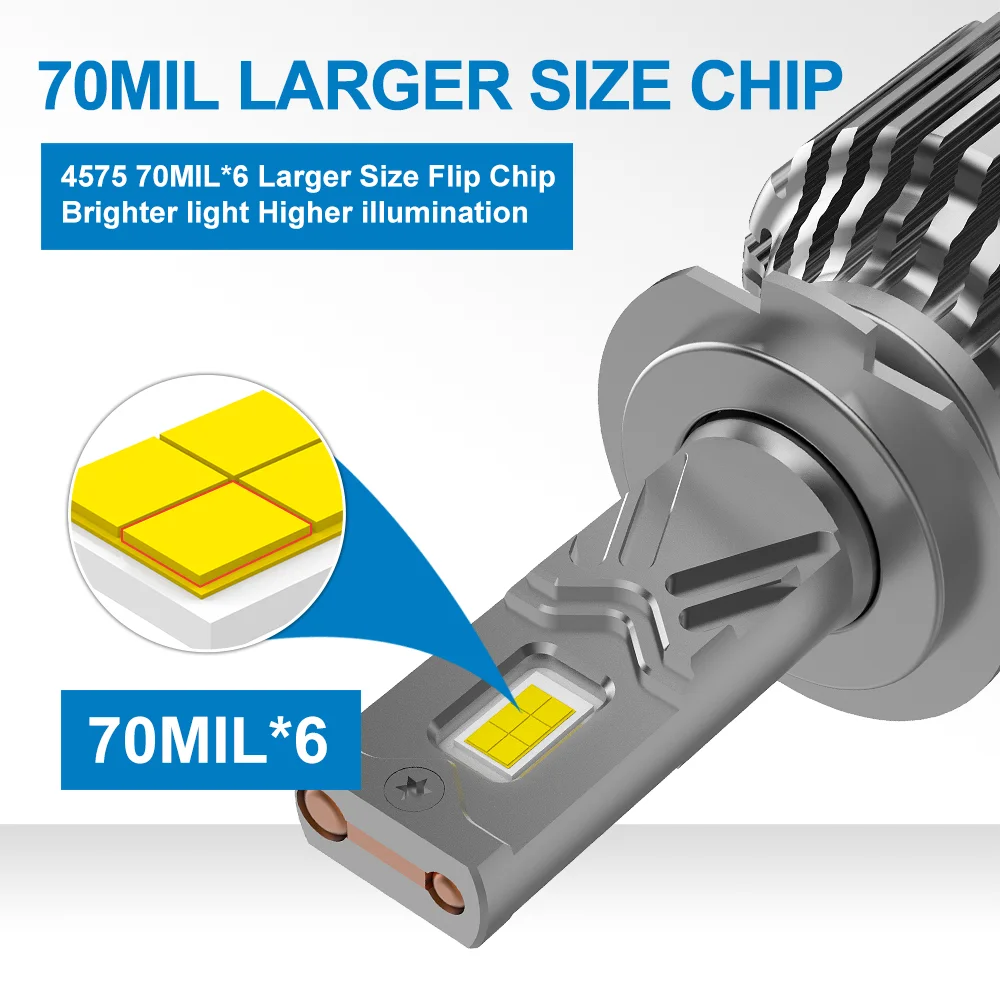
NAOEVO NG LED headlight bulbs utilize six 70MIL flip chips to deliver exceptional brightness, with each bulb offering 90W and 10,800 lumens. Thanks to NAOEVO’s self-developed, high-quality flip chip technology, these bulbs achieve an efficient, wide, and uniform beam pattern for optimal road visibility.
When compared to other LED headlight bulbs with 8 or more beads at the same power and lumen output, NAOEVO NG bulbs excel with higher lux levels, superior light efficiency, and greater stability in performance.
Optics Design & Beads Arrangement
 |  |  |  |  |
6 lamp beads | 8 lamp beads | 12 lamp beads | 6 lamp beads | 4 lamp beads |
Wide And Uniform Low Beam | Wide And Uniform Low Beam | Concentrate High Beam | Concentrate High Beam, Wide And Uniform Low Beam | Wide And Cutoff Low Beam |
LED headlights with a high number of lamp beads are ineffective without a proper chip arrangement. Even if the beads are numerous and bright, the excessive quantity can easily cause scattered light, which is detrimental to safe driving at night.
Because a quality LED headlight bulbs should greatly mimic the filament of original halogen. Too many lamp beads can easily form a light point that is too long and too wide, which is obviously incompatible with the small light point of the halogen lamp.
An LED headlight with good optical design is not necessarily one with a large number of lamp beads but rather one with a well-arranged chip layout. Therefore, even if the number of beads is the same, using different chip layouts will affect the brightness of the car headlights.
Also Read: What makes a quality beam pattern of LED headlight bulb
A Good Example:
NAOEVO Elite LED Headlight Bulb
As mentioned earlier, chip alignment plays a crucial role in shaping the light beam pattern. What sets the NAOEVO Elite Series LED headlight bulbs apart is their unique arrangement of LED beads. The Elite bulbs feature a total of six beads: four arranged in a square pattern in the middle to ensure a concentrated high beam, and one chip at both the top and bottom to enhance the width and uniformity of the low beam.
This design means that when you install NAOEVO Elite LED headlight bulbs in your car, you’ll experience a clear, defined cutoff line for the low beam, preventing glare for oncoming drivers. The high beam is focused for maximum distance, providing a standard light beam pattern similar to halogen bulbs but with increased brightness.
Heat Dissipation
LED headlight bulbs require a good heat dissipation to ensure their normal operation and lifespan. The increase in the number of lamp beads mean more heat is generated. If the cooling system cannot dissipate the heat, it will cause the chip temperature to rise, affecting its efficiency and lifespan.
Factors That Influence The Brightness of LED Headlight
Current: The amount of electrical current flowing through the LED directly affects its brightness. Increasing the current typically increases brightness, but exceeding the maximum rated current can damage the LED.
Forward Voltage: Each LED has a specific forward voltage. The brightness of LED headlight bulb can vary based on how close the applied voltage is to this forward voltage.
LED Efficiency: The luminous efficacy of the LED, which measures how effectively it converts electrical energy into light, plays a significant role in brightness. More efficient LEDs produce more light for the same amount of power. For example, NAOEVO has designed its LED headlight bulb to achieve a maximum brightness of 120LM/W, making it one of the most efficient LED car lights available on the market.
Heat Dissipation: Excess heat can reduce the efficiency and lifespan of an LED headlight bulb, leading to decreased brightness over time. Proper thermal management is crucial for maintaining consistent brightness.
Headlight System Compatibility: The brightness of LED headlight bulb also depends on their compatibility with their vehicle systems, such as the electrical circuit system and fuses. If their systems cannot accommodate the high current demands of the LED headlight bulbs, the brightness of the LED lights may be limited.
Lens And Optics Design:
The reflector and lens design of the headlight play a crucial role in how the light is projected. Well-engineered reflectors and lenses can help focus the light, enhancing the apparent brightness. Cheaply designed reflectors or lenses can cause light scatter, reducing the perceived brightness and making the headlights less effective.
LED Chip Quality
The quality of the LED chip in the headlight bulb plays a crucial role in determining its brightness. High-quality chips, such as those used by trusted manufacturers like NAOEVO, incorporate flip-chip technology, which enhances light efficiency, focus, and ensures a uniform beam pattern.
Conclusion
In conclusion, while more LED beads can contribute to increased brightness, it’s not the sole factor that determines the performance of LED headlight bulbs.
Key elements such as the quality of the LED chips, the design of the lens, and efficient heat management all play essential roles in achieving optimal brightness and visibility. A balanced combination of these factors ensures superior lighting for safe driving.

